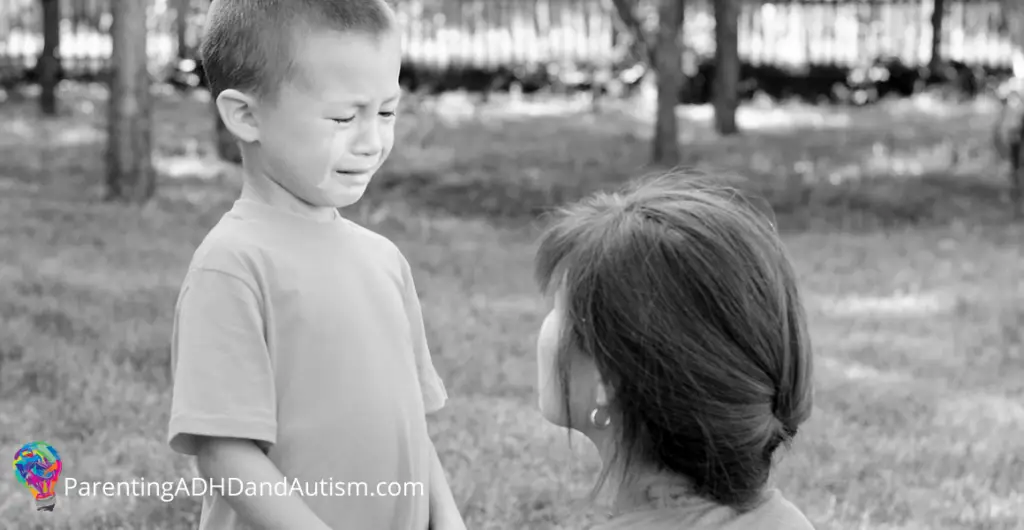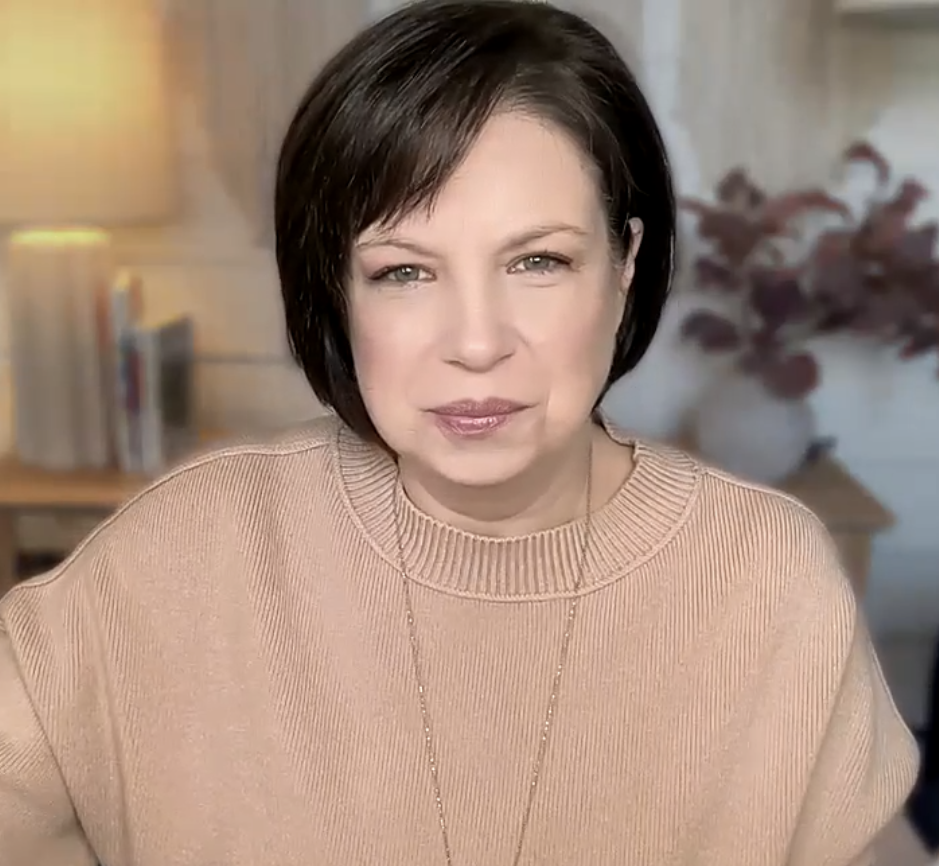Be mindful of your example.
Raising kids with ADHD is tough. They seem to have been born with the gift of instilling frustration even in the most peaceful of humans. It isn’t their intent, mind you. Far from it, in fact. But, nonetheless, their innate behaviors can frustrate everyone around them, especially their parents.
If a parent has an emotional, intense, or inflexible response, the child will too. If the parent remains calm, the child will be calmer than when everyone is emotionally charged. When a parent is angry or aggravated, it only escalates the child’s behavior, adding fuel to the already burning fire. Nothing productive can come from a clash of the titans in your own living room. Repeat after me, “No-thing.” When that happens, everyone walks away angry and frustrated, your child feels misunderstood and down on themselves, and the issue that started it all didn’t even get addressed, much less resolved.
When he was younger, I found myself yelling, “Why can’t you just ____” statements at my son, Ricochet, repeatedly, every day.
“Why can’t you just listen the first time I give instructions?”
“Why can’t you just stand in line without jumping around?”
“Why can’t you just calm down for five minutes?”
“Why can’t you just get the chore over with and move on?”
“Why can't you just do your homework?”
Well, he can’t “just” do these things because genetics and environment clashed to create a brain that simply isn’t built for it. Once I realized, and accepted that, I could begin my journey to calm and positive parenting — two parenting traits that are crucial to success in families with ADHD and/or “high-functioning” autism in the mix.
So, how does a parent remain calm in the throes of a challenging, frustrating, intense situation?
Step 1: The Reality Check
Recognize that what looks like willful defiance may not be (because behavior is communication). Once you accept that ADHD behavior is not willful, nor stupid or lazy, you have built your foundation for calm. You are the parent, the leader by example more than declarations, especially with kids with ADHD. “Do as I do,” should be your #1 parenting mantra.
Step 2: The Empathy
Don't take your child's behavior personally. Leave your own emotions about your child's behavior out of it. Instead, show empathy and validate their feelings (even if you don't think their emotions or behavior are appropriate). State facts in a calm and even tone of voice.
Your child may try to goat you (“I hate you, Mom!”), but don’t bite. Stick to the facts, remain even, and work with your child to find a compromise or resolution that can work for all. By doing this, you are setting an appropriate example for your child, by modeling emotional regulation.
Step 3: The Facilitation
Help your child navigate their emotions and appropriate behavior by guiding him or her through frustration — he or she likely doesn't have the skills to manage frustration yet. By taking on the role of facilitator in these situations, you are teaching lagging skills and naturally improving a similar future situation.
Step 4: The Collaboration
Work with your child, even when they are challenging you. It's essential to throw out traditional parenting assumptions (the parent role is the “authoritarian”), and rewrite the rule book specific to your child's own unique truth. As Ross Greene points out in his latest book, Raising Human Beings, if the parent acts as dictator, someone always has to lose, which is a problem. Instead, collaborating with your child creates a win-win situation.
If your child is having an angry outburst, you could snap and say, “Get over it and act your age.” Or, you could say, very calmly, “How can I help you?” We all know the reactions to each would be far, far different. The first spotlights weaknesses and will only inflame the building fire. The later conveys caring and compassion and is likely to soften anger.
Let's look at an example from my own family:
Ricochet comes to me and says, “I want this new game but I don’t have allowance until tomorrow.”
“Ok, Buddy. You can buy it tomorrow,” I reply.
“NO! I want it now. Tomorrow is too far away!”
“I’m sorry,” I state calmly and matter-of-fact. “The rule is that you must have the money to spend the money. I’m happy to help you get it tomorrow.”
Ricochet begins tossing things and slamming doors to show his anger. I let him cool off in his room for a few minutes, then go check on him.
“Your rules are stupid! It doesn’t hurt anybody for me to get it today!” he fires off, making sure I see the evil glare he’s sending my way.
“I’m sorry you don’t agree with the rule, but it’s still part of life for everyone. Momma and Daddy don’t get to spend our money before we have it, so it’s something you have to learn as you grow up too.” Still totally calm and even, I add, “You can make a purchase tomorrow. It’s almost bedtime now, so that’s really not so far away.”
Ricochet groans.
“I like the way you retreated to your bedroom to cool off instead of continuing to fight with Momma.”
Is it hard to pull that level of calm off when your 13-year-old is melting down like a toddler? Ab-so-freakin-lute-ly! Of course it is. Remaining calm in challenging situations is a learned skill, but one paramount to your success as a parent of a child with ADHD.
Here are some tricks to use in the moment:
- Give yourself a time out. Say to your child, “I'm going to take a break for a few minutes so we can talk calmly to work out this problem.”
- Take a walk around the block.
- Turn on some music.
- Hum a tune. (Humming is a trigger for Ricochet and will only agitate him more, so be careful with this with your own family.)
- Start singing a silly song or do something else completely silly to break the tension. A psychologist once told our Happy Mama Retreat audience to open the freezer and start a conversation with the peas.
- Close your eyes and take relaxing belly breaths. Say to your child, “I'm going to close my eyes and take some calming breaths so I can better help you resolve the problem. My eyes will be closed but I'm still listening to everything you say.”
- Here are some calming sensory activities for your child too: 231: Sensory Strategies for Self-Regulation, with Rachel Harrington, COTA/L, AC & Jessica Hill, COTA/L.
Step 5: The Control
Remember who really has control of the situation — you, the parent. That's right… you can maintain ultimate control of a situation without yelling, slamming, and threatening. I would argue that you are relinquishing some of your control when you act in anger and frustration, instead of following the remain calm guidelines outlined here.




